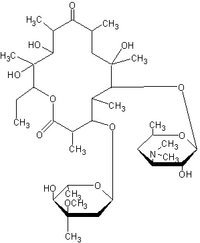Definition
Parrot fever is a rare infectious disease that causes pneumonia in humans. It is transmitted from pet birds or poultry. The illness is caused by a chlamydia, which is a type of intracellular parasite closely related to bacteria. Parrot fever is also called chlamydiosis, psittacosis or ornithosis.
Description
Parrot fever, which is referred to as avian psittacosis when it infects birds, is caused by Chlamydia psittaci. Pet birds in the parrot family, including parrots, parakeets, macaws, and cockatiels, are the most common carriers of the infection. Other birds that may also spread C. psittaci include pigeons, doves, mynah birds, and turkeys. Birds that are carrying the organism may appear healthy, but can shed it in their feces. The symptoms of avian psittacosis include inactivity, loss of appetite and ruffled feathers, diarrhea, runny eyes and nasal discharge, and green or yellow-green urine. Sick birds can be treated with antibiotics by a veterinarian.
C. psittaci is usually spread from birds to humans through exposure to infected bird feces during cage cleaning or by handling infected birds. In humans, parrot fever can range in severity from minor flu-like symptoms to severe and life-threatening pneumonia.
Causes & symptoms
Parrot fever is usually transmitted by inhaling dust from dried bird droppings or by handling infected birds. Humans can also spread the disease by person-to-person contact, but that is very rare. The symptoms usually develop within 5-14 days of exposure and include fever, headache, chills, loss of appetite, cough, and tiredness. In the most severe cases of parrot fever, the patient develops pneumonia. People who work in pet shops or who keep pet birds are the most likely to become infected.
Diagnosis
Only 100-200 cases of parrot fever are reported each year in the United States. It is possible, however, that the illness is more common since it is easily confused with other types of influenza or pneumonia. Doctors are most likely to consider a diagnosis of parrot fever if the patient has a recent history of exposure to birds. The diagnosis can be confirmed by blood tests for antibodies, usually complement fixation or immunofluorescence tests. The organism is difficult to culture. A chest x ray may also be used to diagnose the pneumonia caused by C. psittaci.
Treatment
Psittacosis is treated with an antibiotic, usually tetracycline (Achromycin, Sumycin); doxycycline (Doxy, Vibramycin); or erythromycin (Eryc, Ilotycin). Oral medication is typically prescribed for at least 10-14 days. Severely ill patients may be given intravenous antibiotics for the first few days of therapy.
Prognosis
The prognosis for recovery is excellent; with antibiotic treatment, more than 99% of patients with parrot fever will recover. Severe infections, however, may be fatal to the elderly, untreated persons, and persons with weak immune systems.
Prevention
As of 1998, there is no vaccine that is effective against parrot fever. Birds that are imported into the country as pets should be quarantined to ensure that they are not infected before they can be sold. Health authorities recommend that breeders and importers feed imported birds a special blend of feed mixed with antibiotics for 45 days to ensure that any C. psittaci organisms are destroyed. In addition, bird cages and food and water bowls should be cleaned daily.
Key Terms
- Avian chlamydiosis
- An illness in pet birds and poultry caused by . It is also known as parrot fever in birds.
- An organism related to bacteria that infects some types of birds and can be transmitted to humans to cause parrot fever.
- Chlamydiosis, psittacosis or ornithosis
- Other names for parrot fever in humans.
Further Reading
For Your Information
Books
- "Psittacosis." In The Merck Manual of Diagnosis and Therapy, edited by Robert Berkow. Rahway, NJ: Merck Research Laboratories, 1992.
Periodicals
- "Compendium of Psittacosis (Chlamydiosis) Control, 1997." Morbidity & Mortality Weekly Report 46 (July 18, 1997): 1-13.
- Gregory, D. W., and W. Schaffner. "Psittacosis." Seminars in Respiratory Infection 12, no. 1(March 1997): 7-11.
- Huges, C., et al. "Possible nosocomial transmission of psittacosis." Infection Control Hospital Epidemiology 18, no. 3 (March 1997): 165-168.
Organizations
- U. S. Department of Health and Human Services, Public Health Service, Centers for Disease Control and Prevention (CDC), Atlanta, Georgia 30333. http://www.cdc.gov.
Other
- Psittacosis (Parrot Fever; Ornithosis). http://www.thriveonline.com.
Gale Encyclopedia of Medicine. Gale Research, 1999.



